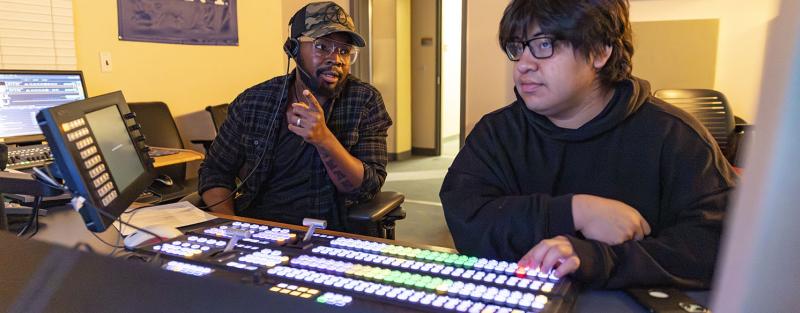Explore classes that will give you the technical skills and experience to launch your career in television or videography.
The core TV production degree courses start by studying the history and function of the media in society. You’ll also learn about sound design, TV studio production and video field production, with an on-site internship with a local studio or business.
You’ll spend three out of four semesters in the studio using state-of-the-art TV and video equipment and working on projects to build a portfolio. Along with general education courses, choose from electives including digital photography, motion graphic design, and 3D modeling and animation.
